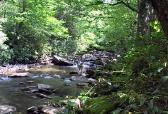
rainfall amounts fall below
average. This can be very bad
for the Smoky Mountains in all
respects, including the trout.
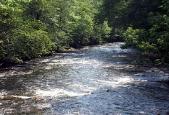
rains and/or when the rainfall
amounts are above average.
To much water can also be
bad for the Smoky Mountains
in all respects, including the
trout. Floods destroy the
aquatic insects, redds, and
other things trout rely on.
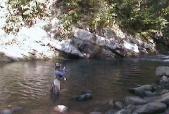
have large pools like this one
at Little River.
What is a freestone stream?
A freestone stream is born at the top of mountains as drops of rainwater and melting snowflakes. As gravity forces these droplets to seep through the crevices of rocks, soil and organic matter, they combine into small trickles of water. Some of this water stays on the surface and some sinks into the ground to later emerge as a tiny spring. These trickles eventually collide and become larger and larger. They form tiny streams that you can step across. The tiny streams eventually join other tiny steams to form larger ones. These tiny streams are made larger along the way by many other trickles of water and eventually become streams that are large enough to be named and shown on maps. These streams are usually the headwaters of what will become a large freestone stream or river. The pH level of the water is usually low.
Generally, water in the headwater streams is fast moving pocket water. Most headwaters fall through steep gradients and rapidly flow downhill. As the stream reaches the lower elevations of the foothills the gradients become less and less and the flow of the water decreases accordingly. As more and more water collects the streams become wider. The water in the larger streams slows as it moves through the valley.
As the stream reaches the lower elevations of the valley and the flows decrease, the temperature increases. Eventually the water will become too warm to support trout and other warm water species of fish such as smallmouth bass will become more prevalent. The slower moving water will not hold as much dissolved oxygen as the faster moving headwaters. This also becomes an important factor in the stream’s ability to support trout.
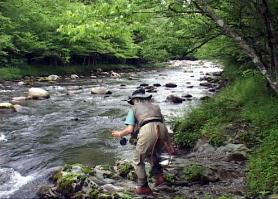
The water level in this stream is about normal. In order to fish freestone streams successfully, you have got to be flexible. In other words, you need to be able to “go with the flow”.
It’s difficult to conceive this size stream starting out as tiny springs near the top of the high mountains in the park but it did. Anglers need to change their methods of fishing as drastically as the stream changes in size.
Copyright 2011 James Marsh
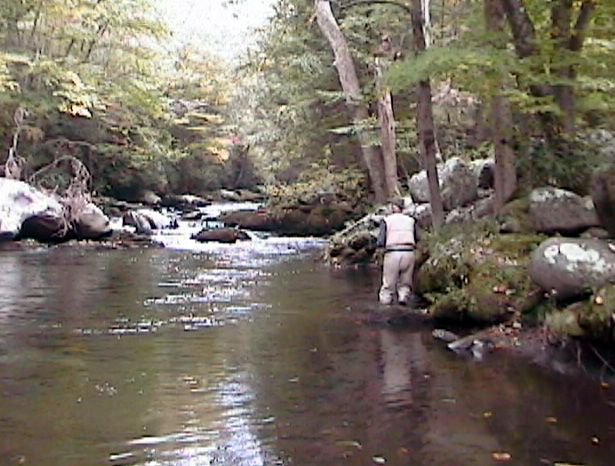
the West Prong or the Little
Pigeon River.